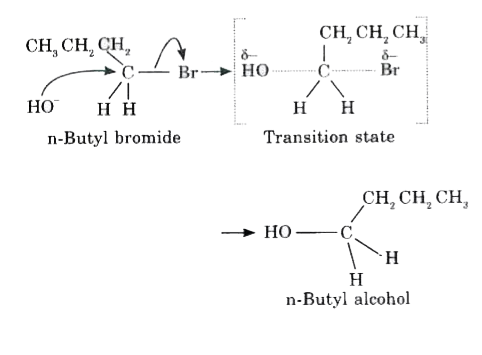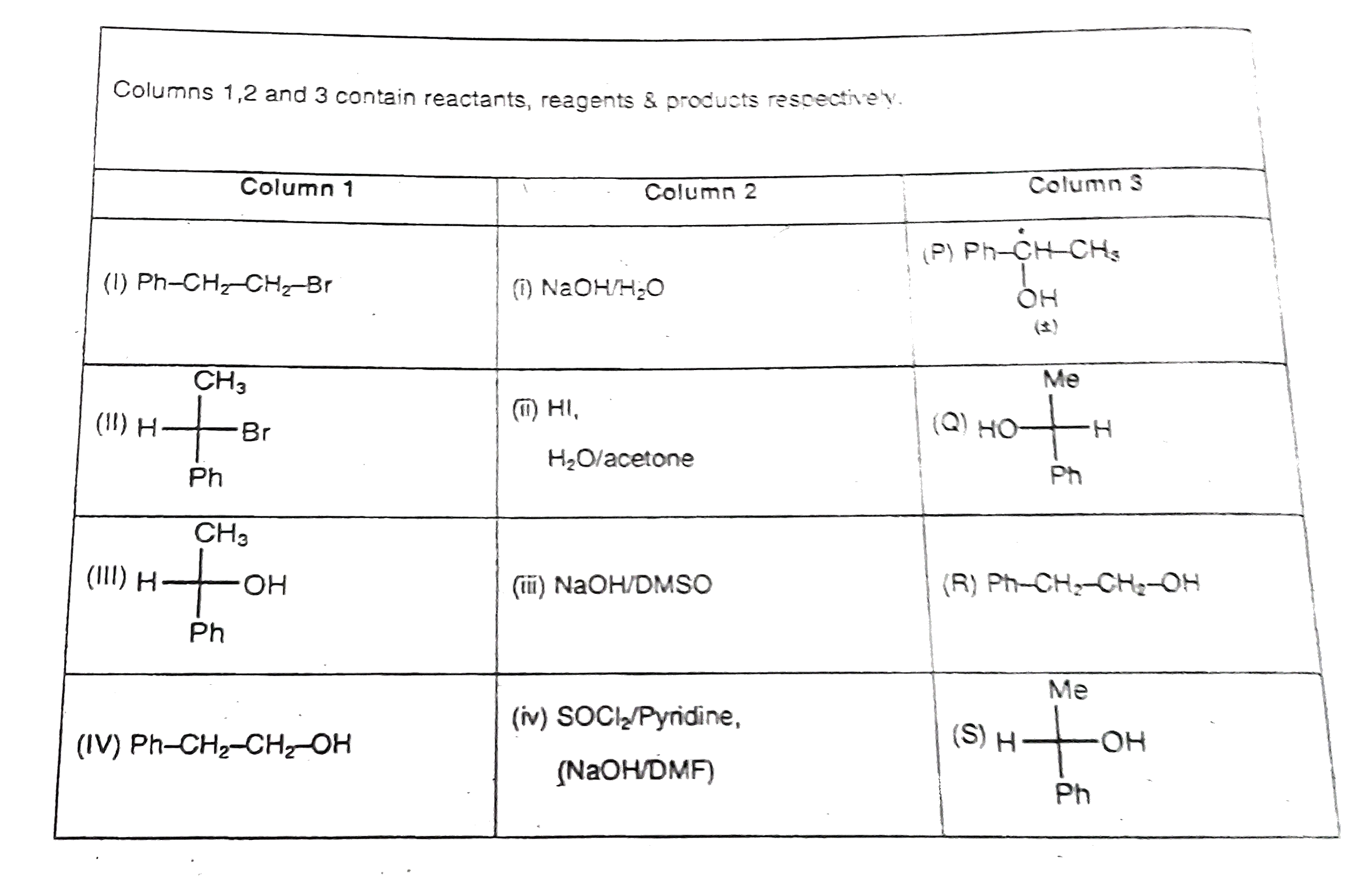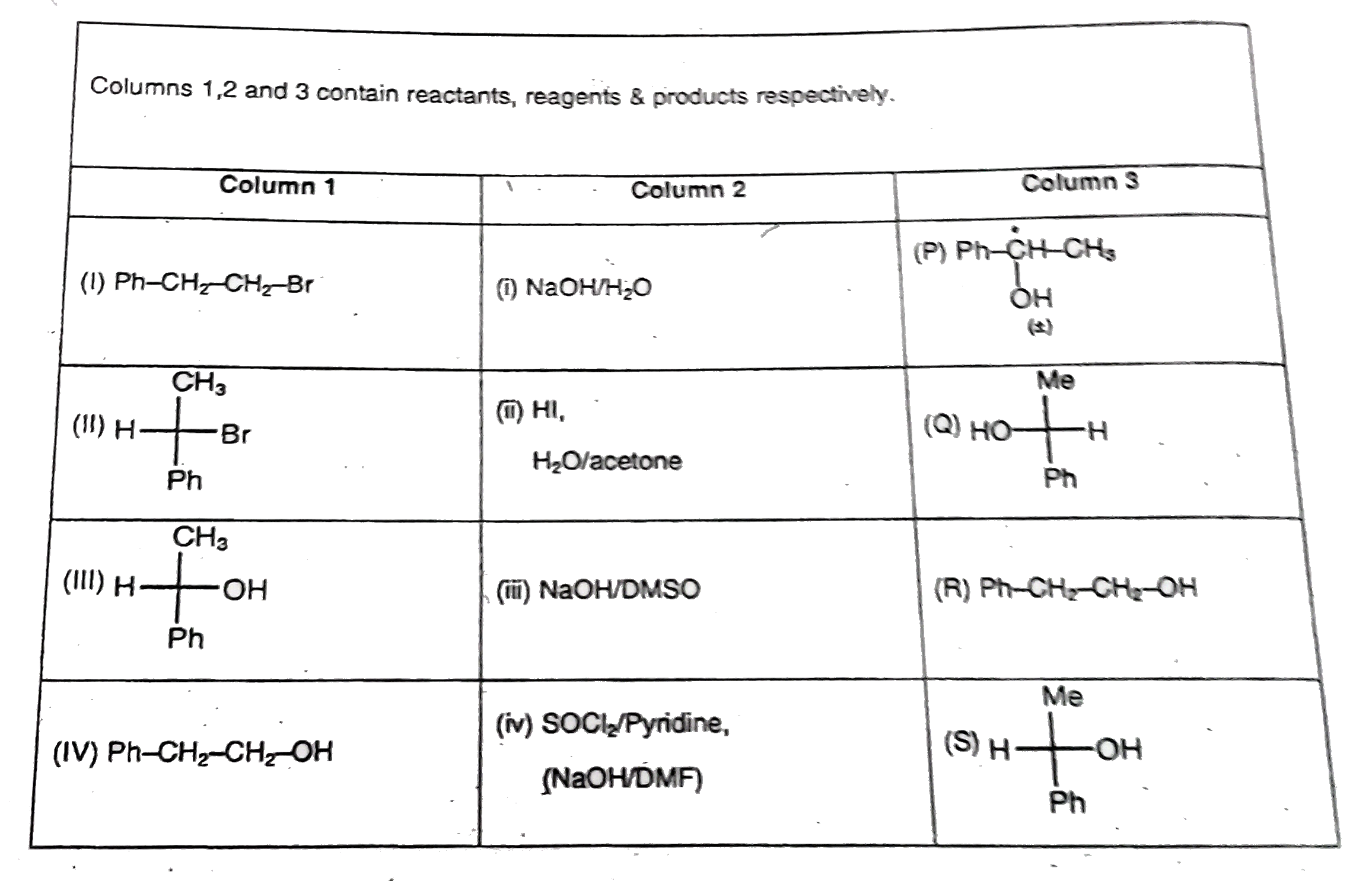tert-Butylbromide reacts with aq. NaOH by SN1 mechanism while n-butylbromide reacts by SN1 mechanism. Why?
In general, the SN1 reaction proceeds through the formation of carbocation. The tert-butyl bromide readily laus Br− ion to form table 3∘ carbocation.
Therefore, it reacts with aqueous KOH by SN1 mechanism as:
CH3−CH3∣C∣CH3−BrIonisation−−−−−→−BrslowCH3−CH3∣C+∣CH3tert-butyl carbocation(stable)
CH3−CH3∣C+∣CH3OH−−−→fastCH3−CH3∣C∣CH3−OHtert-Butyl alcohol
On the other hand, n-butyl bromide does not undergo ionization to form n-butyl carbocation (1∘) because it is not stable. Therefore, it prefers to undergo reaction by SN2 mechanism, which occurs in one step through a transition state involving nucleophilic attack of OH− lon from the back side with simultaneous expulsion of Br− ion from the front side.

SN1mechanism follows the reactivity order as 3∘>2∘>1∘ while SN2 mechanism follows the reactivity order as 1∘>2∘>3∘
Therefore, tert-butylbromide (3∘) reacts by SN1 mechanism while n-butylbromide (1∘) reacts by SN2 mechanism
Topper's Solved these Questions
- BOOK - MODERN PUBLICATIONCHAPTER - HALOALKANES AND HALOARENESEXERCISE - NCERT examplar Problems (Matching Type Questions)6videos
HALOALKANES AND HALOARENES
- BOOK - MODERN PUBLICATIONCHAPTER - HALOALKANES AND HALOARENESEXERCISE - NCERT examplar Problems (Assertion and Reason Type Questions)10videos
HALOALKANES AND HALOARENES
- BOOK - MODERN PUBLICATIONCHAPTER - HALOALKANES AND HALOARENESEXERCISE - NCERT examplar Problems (Multiple Choice Questions (Type-II))12videos
HALOALKANES AND HALOARENES
- BOOK - MODERN PUBLICATIONCHAPTER - GENERAL PRINCIPLES AND PROCESSES OF ISOLATION OF ELEMENTSEXERCISE - COMPETION FILE (Integer Type Numerical Value Type Questions)5videos
GENERAL PRINCIPLES AND PROCESSES OF ISOLATION OF ELEMENTS
- BOOK - MODERN PUBLICATIONCHAPTER - ORGANIC COMPOUNDS CONTAINING NITROGEN EXERCISE - UNIT PRACTICE TEST5videos
ORGANIC COMPOUNDS CONTAINING NITROGEN
Similar Questions
Knowledge Check
- Question 1 - Select One

Only SN1 mechanism is observed in :A(I)(i)(R)B(II)(iii)(P)C(IV)(ii)(S)D(III)(ii)(P) - Question 2 - Select One

SN2 mechanism is observed in :A(I)(iii)(R)B(IV)(iv)(R)C(II)(iii)(Q)Dall - Question 3 - Select One
For SN1 mechanism which of the following is correct ?
AInversion (100 %)BFormation of carbocationCNon-polar solventDElimination
Explain why
(a) the dipole moment of chlorobenzene is lower than that of cyclohexyl chloride ?
(b) alkyl halides, though polar, are immiscible with water ?
(c) vinyl chloride is unreactive in nucleophilic substitution reactions ?
(d) neopentyl bromide undergoes nucleophilic substitution reactions very slowly ?
(e) 3-bromocyclohexane is more reactive than 4- bromocyclohexane in hydrolysis with aqueous NaOH ? (f) tert butyl chloride reacts with aqueous sodium hydroxide by SN1 mechanism while n-butyl chloride reacts by SN2 mechanism.
(g) Grignard reagents should be prepared under anhydrous conditions ?View SolutionThe following will react faster by SN1 mechanism
View SolutionWhich of the following reaction follows SN1 mechanism ?
View SolutionThe order of reactivity of halides towards SN 1 mechanism is
View SolutionWhich of the following reaction follows SN1 mechanism ?
View Solution

